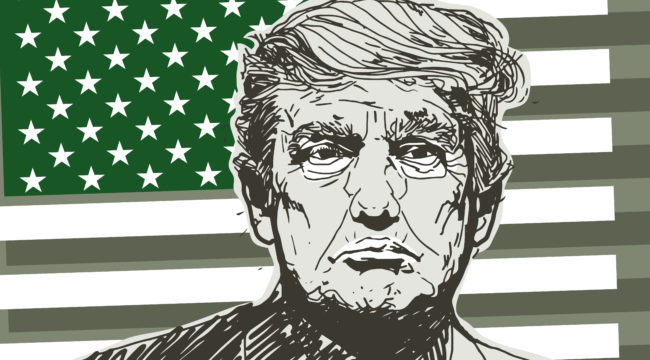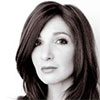Trump Takes a Page From Nixon’s Playbook
Historically, presidents have refrained from publicly commenting on the Federal Reserve’s policy. This allows the Fed to maintain its veneer of independence.
However, it is clear that this White House is very different. President Trump is not one to keep his opinions quiet. Trump has publicly expressed frustration with the Fed, believing its rate hikes could negate the impact of the tax cuts impact growth.
During a recent interview with CNBC Squawk Box host, Joe Kernen, Trump said, “I’m not thrilled” about the rate hikes. Why not? The president continued:
Because we go up and every time you go up they want to raise rates again. I don’t really — I am not happy about it… I don’t like all of this work that we’re putting into the economy and then I see rates going up.
As further indication of how different Trump is from previous presidents, he added these remarks about commenting on Fed policy:
Now I’m just saying the same thing that I would have said as a private citizen. So somebody would say, ‘Oh, maybe you shouldn’t say that as president.’ I couldn’t care less what they say, because my views haven’t changed.
Stocks, markets and the dollar fell on his remarks. Sticking with tradition, the Fed did not comment on them. But here’s what Powell has on his mind…
As geopolitical tensions rise, trade wars mount, currency wars spawn and volatility continues to build, it’s clear the economy faces increasing pressure that could spiral into recession or worse.
Powell met with senior officials at the Fed recently to consider monetary policy in the wake of Trump’s comments (and though he didn’t say it, the markets).
After the interview aired, the White House issued a statement in which it “emphasized that Trump did not mean to influence the Fed’s decision-making process.”
But that’s just typical spin. While Powell wants to portray his independence, the fact remains he was still appointed by Trump. That’s political influence in the making.
President Trump’s indirect pressuring of the Federal Reserve not to raise rates is not unprecedented. He took a page out of another Republican president’s playbook – Richard Nixon. When the Fed began raising interest rates during Nixon’s term, he also raised objections, although not in public like the current president.
Back then, the U.S. had been in the throes of a recession in the beginning of the 1970s. The Fed had cut rates by half to stimulate the economy. There was no quantitative easing (QE) program during that period. That’s because it wasn’t a banking crisis preceding that recession, so the level of Fed support wasn’t anywhere near as expansive as it has been this past decade.
Fed Chairman Arthur Burns believed that “awful problems” could occur if the Fed didn’t raise rates in tandem with the growing economy. On a somewhat lesser scale, that’s the position of Jerome Powell today.
He wants to head off what he perceives as inflationary pressures before they jeopardize the current recovery. He doesn’t want to play catch-up and have to drastically reverse course down the road.
But Nixon didn’t want to risk cooling it off before his 1972 election. As White House audio tapes recorded, Nixon told Burns on March 19, 1971, “We’ve really got to think of goosing it… late summer and fall of this year and next year.”
Subsequent conversations led to a reversal of rate hikes during the fall of 1971. But importantly, what President Trump should know is that Nixon’s intervention into the Fed’s policies didn’t end well.
Burns’ reversal inevitably led to one of the highest inflationary periods in U.S. history. And of course the term “stagflation” entered the language during the ‘70s, with their high inflation and limited growth. I remember the gas lines very well.
But the fact is, we live in different times now.
America was just beginning to move off the gold standard in those days, so the spending restraints it engendered still exerted force. And even with the Vietnam War and the recently initiated Great Society to pay for, the U.S. debt-to-GDP ratio was only about 35% in 1971. It’s now about 105%. The last vestiges of the gold standard are long gone.
Most importantly, it was a time before central banks had so much influence over markets. Central banks like the Fed were fixated on macroeconomic stability, not the performance of the stock market.
We live in a completely new monetary and fiscal world today, especially after the 2008 financial crisis. The Fed’s balance book went from about $800 billion pre-crisis to a gargantuan $4.5 trillion. That type of move was completely unprecedented.
Now the Fed is raising interest rates and reducing its balance sheet in order to return to “normal.”
So far, the Fed has raised rates seven times since December 2015. Under Jerome Powell, it has raised rates twice.
Now, the Fed forecasts another two rate hikes by the end of the year, once in September and then December. While it’s likely the second one is much lower than the first, the fact is that both are in play.
Markets are currently wondering if there will be a “Powell put.” During Alan Greenspan’s reign at the Federal Reserve, a phenomenon dubbed the “Greenspan put” prevailed.
Wall Street’s expectation was that if the stock market wobbled, the Fed would save the day by cutting rates (creating money and the need for speculators to then get returns from the stock rather than the bond market).
The Fed has largely played by a similar “put” playbook for the past decade, with low rates and a $4.5 trillion book of assets courtesy of QE. The mainstream media is slow to recognize this. Only now are they beginning to wonder whether the Fed will do what’s needed to lift the markets when it becomes necessary.
But, as a recent Bloombergsuggests, Powell is facing the same pressure to have his own put, “except this time it would be tied to the bond market.” Now, policy makers are increasingly concerned about the possibility of an inverted yield curve — where short-term rates are higher than long-term ones.
If that happens, policy makers and Wall Street would want the Fed to cut rates. An inverted yield curve is probably the most reliable recession indicator out there, with a proven record going back to the 1950s.
The other dynamic at hand is that winning trade wars requires a weaker dollar and a slower pace of rate hikes. That’s exactly what Powell alluded to in recent testimony before Congress.
If Powell adheres to Trump’s wishes, it’ll be because the economy isn’t growing as fast as predicted and because banks remain addicted to cheap central bank credit, which I refer to as dark money. That means more central bank credit to support markets when they hit a rough patch.
The market will continue to enjoy an upside from dark money policy that continues the status quo. Dark money could remain on course until the end of year, which would lift non-trade war associated stocks and weaken the dollar.
The bubble will eventually burst, but I don’t foresee that happening just yet. The bottom line is, dark money is the key to understanding today’s rigged and artificial markets.
Regards,
Nomi Prins
for TheDaily Reckoning



Comments: